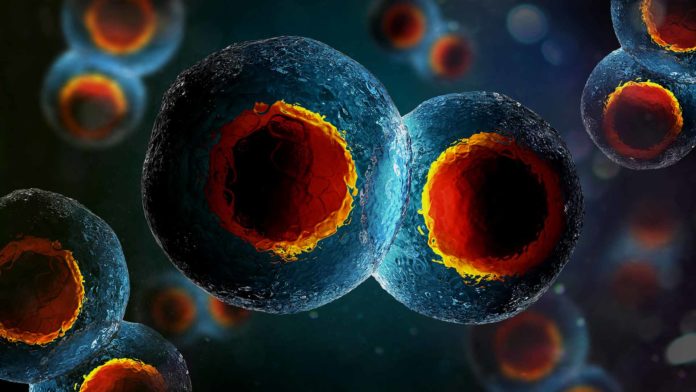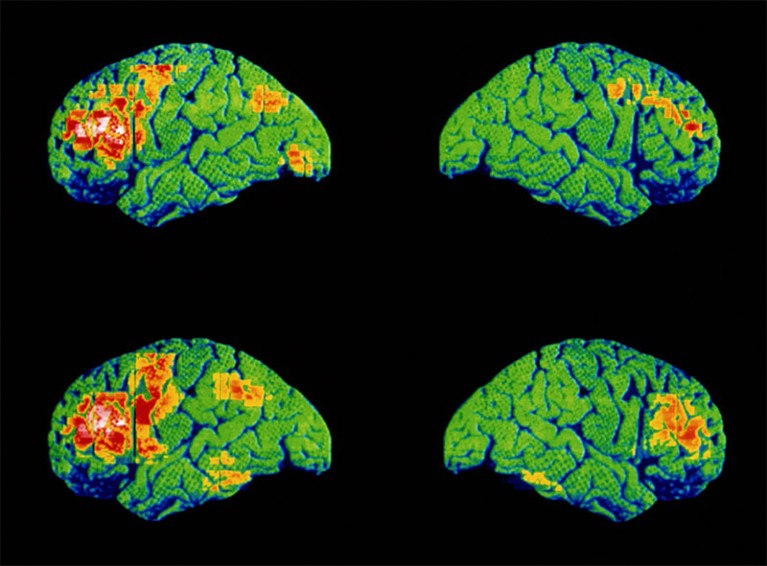Dreyfuss is a co-author of the book “Meme Wars: The Untold Story of the Online Battles Upending Democracy in America.”
Do you know what a Zynbabwe is? Or an upper-decky lip pillow? OK, here’s an easier one — how about just Zyn?
If you are scratching your head, don’t feel bad: Almost no adult I have spoken to has had any idea either. This is despite the fact that the nicotine pouch Zyn is a jewel in the crown of a multibillion-dollar tobacco company. Haven’t heard of nicotine pouches to begin with? Neither had I. But when I ask my 19-year-old neighbor Ian if he knows what a Zynbabwe is, I get a shocked reply: “You know about Zyns?”
You may have seen the tins that contain 15 little white rectangles that look like the desiccant packs labeled “Do Not Eat.” Zyns are filled with nicotine and are meant to be placed under your lip like tobacco dip. No spitting is required, so nicotine pouches are even less visible than vaping. Zyns come in two strengths in the United States, three and six milligrams. A single six-milligram pouch is a dose so high that first-time users on TikTok have said it caused them to vomit or pass out. And while Zyns are presented as a healthier, smoke-free alternative to cigarettes, they are still addictive, according to Robert Jackler, a professor emeritus at the Stanford University School of Medicine who has studied nicotine industry marketing. And dentists are already reporting seeing gum injuries in patients who use pouches.
So how are kids learning about these little pouches? Greyson Imm, an 18-year-old high school student in Prairie Village, Kan., said he was 17 when Zyn videos started appearing on his TikTok feed. The videos multiplied through the spring, when they were appearing almost daily. “Nobody had heard about Zyn until very early 2023,” he said. Now, a “lot of high schoolers have been using Zyn. It’s really taken off, at least in our community.”
As a longtime tech reporter, I thought I was well acquainted with the dangers of the internet. I co-wrote a book about them. I don’t let my young children even know about YouTube. But I was stunned by the vast forces that are influencing teenagers. These forces operate largely unhampered by a regulatory system that seems to always be a step behind when it comes to how children can and are being harmed on social media.
Parents need to know that when children go online, they are entering a world of influencers, many of whom are hoping to make money by pushing dangerous products. It’s a world that’s invisible to us, because when we log on to our social media, we don’t see what they see. Thanks to algorithms and ad targeting, I see videos about the best lawn fertilizer and wrinkle laser masks, while Ian is being fed reviews of flavored vape pens and beautiful women livestreaming themselves gambling crypto and urging him to gamble, too.
Smartphones are taking our kids to a different world. We know this, to some extent. We worry about bad actors bullying, luring or indoctrinating them online — all risks that have been deeply reported on by the media and that schools and public agencies like the Federal Trade Commission are taking great pains to address. The social-media giant Meta has been sued on allegations that using its platforms is associated with issues including childhood anxiety and depression. Yet all of this is, unfortunately, only part of what makes social media dangerous.
The whole issue of influencer-marketing to youth, even for addictive products regulated by the government, falls into a legal and technical canyon so vast that the next generation is being lost in it.
The Rise of the Zynfluencer
First, a quick note about Zyn: A spokesman for its parent company said that while Zyn does contain nicotine, which is addictive, it’s intended as a smoke-free alternative for those already using tobacco or nicotine products, and its marketing is directed to adults 21 and older. It added that the most recent results from the annual National Youth Tobacco Survey found that underage use of nicotine pouches is very low.
Another thing to know about Zyn? The tobacco conglomerate Philip Morris International acquired the Zyn maker Swedish Match in 2022 as part of a strategic push into smokeless products, a category it projects could help drive an expected $2 billion in U.S. revenue in 2024. P.M.I. is also a company that has long denied it markets tobacco products to minors despite decades of research accusing it of just that. One 2022 study alone found its brands advertising near schools and playgrounds around the globe.
It’s conventional wisdom in the advertising world that the younger you get consumers hooked on a brand, the more likely you’ll have them for life. Yet the internet has changed how minors and young adults learn about those products.
Maybe the best way is to explain just how different things are in the social media era from when today’s parents were teenagers. Take me, for example, an Xennial who came of age with grunge and Nickelodeon. This was the ’90s, when magazines ran full-page Absolut Vodka ads in different colors, which my friends and I collected and taped up on our walls next to pictures of a young Leonardo DiCaprio — until our parents tore them down. This was advertising that appealed to me as a teenager but was also visible to my parents, and — crucially — to regulators, who could point to billboards near schools or flavored vodka ads in fashion magazines and say, this is wrong.
Even the most committed parent today doesn’t have the same visibility into what her children are seeing online, so it is worth explaining how products like Zyn end up in social feeds.
Let’s start with influencers. They aren’t traditional pitch people. Think of them more like the coolest kids on the block. They establish a following thanks to their personality, experience or expertise. They share how they’re feeling, they share what they’re thinking about, they share stuff they like — and sometimes they’re paid by the company behind a product and sometimes they’re not. They’re incentivized to increase their following and, in turn, often their bank accounts. Young people are particularly susceptible to this kind of promotion because their relationship with influencers is akin to the intimacy of a close friend.
With ruthless efficiency, social media can deliver unlimited amounts of the content that influencers create or inspire. That makes the combination of influencers and social-media algorithms perhaps the most powerful form of advertising ever invented.
VideoMoments from a video featuring Tucker Carlson greeting an enormous can of Zyn. The video was uploaded by the Nelk Boys, young male influencers with eight million followers on YouTube alone.
Enter Tucker Carlson. Mr. Carlson, the former Fox News megastar who recently started his own subscription streaming service, has become a big Zyn influencer. He’s mentioned his love of Zyn in enough podcasts and interviews to earn the nickname Tucker CarlZyn.
A few days before Christmas, a short video of Mr. Carlson hit YouTube. Uploaded by the popular Nelk Boys — a group of young male prankster influencers with eight million followers on YouTube alone whose company sold $50 million in merchandise in 2020 — the clip shows Mr. Carlson standing in a field as a helicopter flies overhead. From the helicopter dangles a tin of Zyn roughly the height of a T. Rex. “This is the greatest day!” Mr. Carlson yells before running to the giant canister. “The volume of nicotine in here could save the world.”
Corey Henry, a spokesman at Philip Morris International, said Zyn doesn’t have partnerships or product promotion with any social media influencers or celebrities. He said the company is frequently asked if it is sponsoring Mr. Carlson and that Mr. Carlson’s team has approached the company seeking a partnership to promote Zyn — a request the company has declined. P.M.I. also notes that after Mr. Carlson went on a podcast and joked that Zyns were so good they could even cure erectile dysfunction, the company wrote to inform him that no, in no way does Zyn claim to treat E.D.
When I asked about Philip Morris International’s assertions, Mr. Carlson responded, “Pretty funny.” He did not elaborate.
Another “Zynfluencer” in attendance for the Zyn helicopter stunt was Max VanderAarde. You can glimpse him in a video from the event wearing a Santa hat and toasting Mr. Carlson as they each pop Zyns in their mouths. “You can call me king of Zynbabwe, or Tucker CarlZyn’s cousin,” he says in a recent TikTok. “Probably, what, moved 30 mil cans last year?”
Freezer Tarps, Mr. VanderAarde’s TikTok account, appears to have been removed after I asked the company about it. Left up are the large number of TikToks by the likes of @lifeofaZyn, @Zynfluencer1 and @Zyntakeover; those hashtagged to #Zynbabwe, one of Freezer Tarps’s favorite terms, have amassed more than 67 million views. So it’s worth breaking down Mr. VanderAarde’s videos.
He posted both on TikTok and sometimes also on Instagram and YouTube, with a collected 1.2 million followers. Many of his videos are a loop of skits and challenges, jokes and bravado that would make Joe Camel blush.
There’s a video in which he portrays a sixth grader who needs a jolt of nicotine to perform in a spelling bee. “All I need is one rippoccino,” he says, referring to a “rip” of a vape. There’s a video in which he portrays each of a group of high school students trying to calm themselves after consuming too-strong marijuana. And one where he humorously argues that a young child should be able to have a three-milligram Zyn pouch.
All of these videos would just be jokes (in poor taste) if they were seen by adults only. They aren’t. But we can’t know for sure how many children follow the Nelk Boys or Freezer Tarps — social-media companies generally don’t release granular age-related data to the public. Mr. VanderAarde, who responded to a few of my questions via LinkedIn, said that nearly 95 percent of his followers are over the age of 18. (The minimum age to purchase Zyn is 21, wich is also the minimum age to purchase marijuana in most states where recreational marijuana is legal.)
For more details, I turned to Influencity, a software program that estimates the ages of social media users by analyzing profile photos and selfies in recent posts. Influencity estimated that roughly 10 percent of the Nelk Boys’ followers on YouTube are ages 13 to 17. That’s more than 800,000 children.
The helicopter video has already been viewed more than one million times on YouTube, and iterations of it have circulated widely on TikTok.
YouTube said it eventually determined that four versions of the Carlson Zyn videos were not appropriate for viewers under age 18 under its community guidelines and restricted access to them by age. A spokesman for the company said that the platform prohibits content aimed to directly sell, link to or facilitate access to regulated goods and services, including the sale of nicotine products, and that YouTube regularly reviews content to ensure that it complies with the platform’s policies.
Mr. Carlson declined to comment on the record beyond his two-word statement. The Nelk Boys didn’t respond to requests for comment. Meta declined to comment on the record. TikTok said it does not allow content that promotes tobacco or its alternatives. The company said that it has over 40,000 trust and safety experts who work to keep the platform safe and that it prevented teenagers’ accounts from viewing over two million videos globally that show the consumption of tobacco products by adults. TikTok added that in the third quarter of 2023 it proactively removed 97 percent of videos that violated its alcohol, tobacco and drugs policy.
The Memeing of It All
Greyson Imm, the high school student in Prairie Village, Kan., points to Mr. VanderAarde as having brought Zyn “more into the mainstream.” Mr. Imm believes his interest in independent comedy on TikTok perhaps made him a target for Mr. VanderAarde’s videos. “He would create all these funny phrases or things that would make it funny and joke about it and make it relevant to us.”
It wasn’t long before Mr. Imm noticed Zyn blowing up among his classmates — so much so that the student, now a senior at Shawnee Mission East High School, decided to write a piece in his school newspaper about it. He conducted an Instagram poll from the newspaper’s account and found that 23 percent of the students who responded used oral nicotine pouches during school.
Through his interviews, Mr. Imm found that some students, particularly those first hooked on nicotine from vaping, are attracted to Zyn’s high nicotine content and near-invisible delivery method, which is so surreptitious it can be easily consumed during class. “The first time you rip a Juul, you never feel like that again,” the piece quotes a student as saying under a pseudonym.
Over the past year, two other high school newspapers — affiliated with St. Louis Park High School in Minnesota, which has around 1,500 students, and with Lake Forest High School, a school with over 1,400 students in the suburbs of Chicago — have separately published pieces noting the popularity of Zyn, with one calling out Freezer Tarps’s account specifically.
“Upper-decky lip cushions, ferda!” Mr. VanderAarde coos in what was one of his popular TikTok videos, which had been liked more than 40,000 times. The singsong audio sounds like gibberish to most people, but it’s actually a call to action. “Lip cushion” is a nickname for a nicotine pouch, and “ferda” is slang for “the guys.”
“I have fun posting silly content that makes fun of pop culture,” Mr. VanderAarde said to me in our LinkedIn exchange.
Videos like his operate like a meme: It’s unintelligible to the uninitiated, it’s a hilarious inside joke to those who know, and it encourages the audience to spread the message. I’ve spent the past three years studying media manipulation and memes, and what I see in Freezer Tarps’s silly content is strategy. The use of Zyn slang seems like a way to turn interest in Zyn into a meme that can be monetized through merchandise and other business opportunities.
Such as? Freezer Tarps sells his own pouch product, Upperdeckys, which delivers caffeine instead of nicotine and is available in flavors including cotton candy and orange creamsicle. In addition to jockeying for sponsorship, Mr. Carlson may also be trying to establish himself with a younger, more male, more online audience as his new media company begins building its subscriber base. The Nelk Boys, like all influencers, are looking to build their following and engagement numbers — something the virality of the product and one of its star boosters would surely help with.
This is the kind of viral word-of-mouth marketing that looks like entertainment, functions like culture and can increase sales. Philip Morris International, even if it doesn’t intend to, could be benefiting substantially from the social-media excitement around its product.
The More Things Change
What’s particularly galling about all of this is that we as a society already agreed that peddling nicotine to kids is not OK. It is illegal to sell nicotine products to anyone under the age of 21 in all 50 states. There’s good reason for this, as numerous studies have shown that the younger people are when they try nicotine for the first time, the more likely they will become addicted to it. Nearly 90 percent of adults who smoke daily started smoking before they turned 18.
Joe Camel was retired in 1997 after the Federal Trade Commission accused the R.J. Reynolds company of using the goofy mascot to target young people. Soon after, tobacco companies agreed to a host of advertising and marketing restrictions as part of a $206 billion settlement to resolve lawsuits brought by state attorneys general.
Decades later — even after Juul showed the power of influencers to help addict yet another generation of children — the courts, tech companies and regulators still haven’t adequately grappled with the complexities of the influencer economy.
We are living in the absurdities of that loophole. California forbids any tobacco billboards near the middle school by my house in San Francisco, but that law does not prevent unsponsored #Zynbabwe videos from showing up in those students’ feeds at recess.
Facebook, Instagram and TikTok all have guidelines that prohibit tobacco ads and sponsored, endorsed or partnership-based content that promotes tobacco products. Holding them accountable for maintaining those standards is a bigger question.
Government agencies are clearly overwhelmed; they need the resources to enforce the rules already on the books to protect children from exposure to addictive products. And while regulators these days are all over the problems presented by teenagers and social media, their solutions don’t do enough to address this problem.
The F.T.C. has guidelines for influencer sponsorship disclosures and has issued guidance to its staff noting that influencers who promote products to children shouldn’t blur the line between advertising and entertainment. An agency spokeswoman also noted that sponsorship doesn’t necessarily involve money changing hands: It could include anything from the provision of free products to a personal relationship to winning a prize. Because Philip Morris International is not sponsoring any of this content, however, none of those rules seem to apply. The spokeswoman said the agency cannot comment on the specific situation or company.
A recent F.T.C. effort to propose new online privacy safeguards for children addresses ad targeting, but it doesn’t broaden the definition of advertising to encompass unpaid viral influencer content. A federal judge blocked California’s recent legislation requiring websites to implement protections for users under 18, saying the law most likely violated the First Amendment. The New York Times filed a brief in that case, arguing certain provisions in the law were unconstitutional; the state attorney general has appealed the ruling.
A separate piece of legislation, the bipartisan Kids Online Safety Act, is awaiting a Senate vote. The bill has decent prospects of passage, but it doesn’t directly address the issue of unpaid influencers, said John Perrino, a policy analyst at the Stanford Internet Observatory. As the bill now stands, state attorneys general could take the social-media platforms to court for amplifying specific kinds of harmful content to those 16 and under, including the promotion of tobacco, gambling and alcohol. Some progressives worry that it would empower red-state warriors to censor L.G.B.T.Q. content.
We need a new definition of advertising that takes into account how the internet actually works. I’d go so far as to propose that the courts broaden the definition of advertising to include all influencer promotion. For a product as dangerous as nicotine, I’d put the bar to be considered an influencer as low as 1,000 followers on a social-media account, and maybe if a video from someone with less of a following goes viral under certain legal definitions, it would become influencer promotion.
Laws should require tech companies to share data on what young people are seeing on social media and to prevent any content promoting age-gated products from reaching children’s feeds. Of course, it’s easy for children to claim they’re older when they create social media accounts, so those efforts must go hand in hand with social media companies putting real teeth behind their efforts to verify the ages of their users. Government agencies should enforce the rules already on the books to protect children from exposure to addictive products, such as the Food and Drug Administration’s mandate to authorize the sale of nicotine products.
Ideally, Americans could rely on lawmakers to do this work, but more likely, it will be left to the courts.
“I think the Supreme Court is going to have to take up this question of new forms of advertising at some point, because it’s very hard to place within the existing body of First Amendment law,” Genevieve Lakier, a University of Chicago Law School professor, said. “But it seems like this is the direction marketing is going.”
I refuse to believe there aren’t ways to write laws and regulations that can address these difficult questions over tech company liability and free speech, that there aren’t ways to hold platforms more accountable for advertising that might endanger kids. Let’s stop treating the internet like a monster we can’t control. We built it. We foisted it upon our children. We had better try to protect them from its potential harms as best we can.
While I was researching this story, my 8-year-old son picked up a package on the sidewalk outside our house. “Mom, can I have some of this gum?” he yelled, opening the carton. “Don’t eat things you find on the ground!” I responded. When I got closer, I realized it wasn’t gum he was holding; it was a package of Zyn. A few weeks earlier, I would have had no idea what it was.






.jpg)
.jpg)

